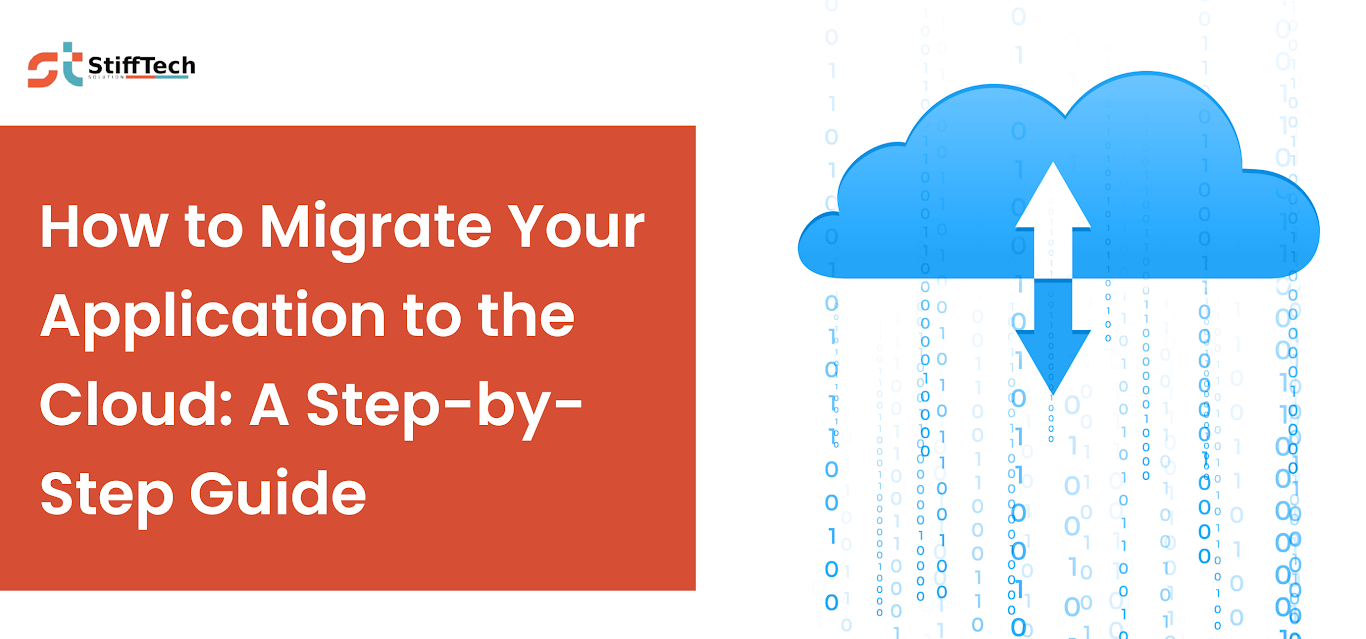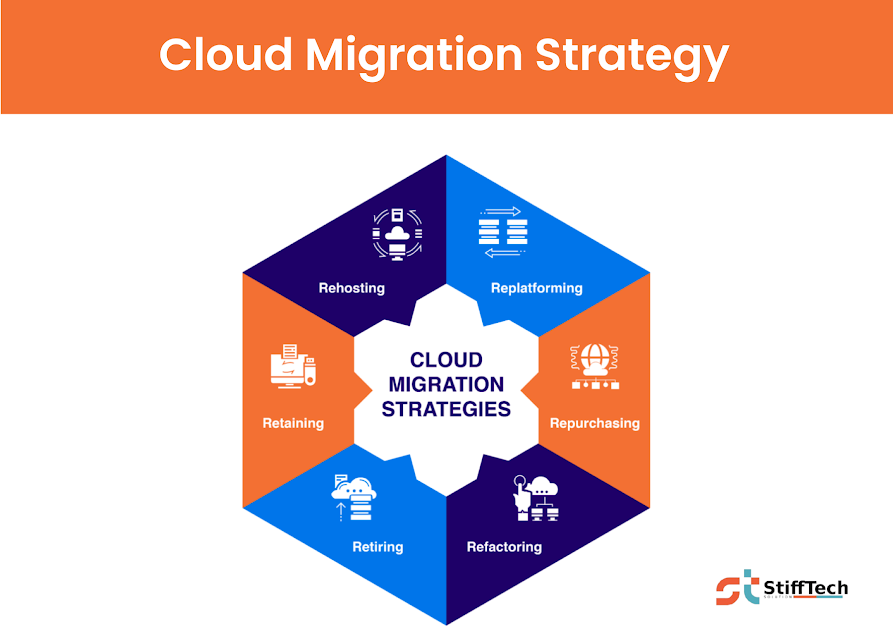
How to Use DeepSeek for Digital Marketing
The rise of AI has transformed the way businesses approach digital marketing. Tools like DeepSeek make it easier to analyze

Today, cloud migration has evolved into a competitive need for the scale, security performance and cost optimizing businesses. The transfer of applications from on-premises infrastructure to the cloud can be viewed as a possible game changer to the enterprise. It can make you freer, more flexible, and secure by moving the applications. Therefore, it has become a transformation that is essential for businesses today.
Still, the big question is how do you migrate your application without any impact on your daily operations when the cloud platform is new? This comprehensive guide will initiate the user into a journey from assessing your current infrastructure to troubleshooting cloud services after migration. Whether you’re new to cloud computing or looking to refine your strategy, this guide will help you migrate smoothly and successfully.
Cloud migration refers to the process of moving applications, data, and workloads from on-premises infrastructure to a cloud-based environment. Organizations choose application migration to improve flexibility, enhance security, and reduce operational costs.

The six cloud migration strategies, known as the “6 R’s of Cloud Migration,” provide businesses with different approaches to moving workloads to the cloud.
Rehosting (Lift-and-Shift) is the least challenging method, where applications are sent to the cloud with no or very slight changes. This is perfect for companies that want a quick migration with lower upfront costs, such as migrating virtual machines from on-premises to AWS EC2.
Replatforming (Lift-Tinker-and-Shift) further moves it, making minor enhancements to applications for a better user experience without major architectural changes, for example, a self-managed database is transferred to a cloud-managed service like Amazon RDS.
Repurchasing (Drop-and-Shop) means replacing an existing program with an entirely new solution that is usually cloud-based. This is a great option for companies that are seeking to update their old systems by, for instance, migrating from on-premise CRM to Salesforce.
On the other hand, Refactoring (Re-architecting) is the most advanced strategy requiring companies to reconstruct applications in such a way as to make full use of cloud-native features, for instance making a monolithic system a serverless system based on AWS Lambda.
Retiring refers to the elimination of the previous and no longer necessary applications, which in turn reduces the operation costs and complexity of the system. For example, a company can retire an old inventory system after the successful implementation of a new ERP system.
Retaining is for applications that must remain on-premises due to security, compliance, or dependency issues. This is common in hybrid cloud strategies, where a business may keep sensitive customer databases on-premises while migrating other workloads to the cloud.
Before migrating your applications to Google Cloud, it’s important to evaluate your current infrastructure and define your cloud requirements. This involves assessing existing applications, workloads, and data storage needs, determining business goals such as scalability, cost-efficiency, or security improvements, and identifying potential challenges related to compliance, data sensitivity, and workload compatibility. By understanding these factors, you can choose the right cloud model—public, private, hybrid, or multi-cloud—that best suits your business needs.
Once you have a clear understanding of your needs, the next step is to create a migration roadmap. This involves defining a migration timeline with key milestones, assigning responsibilities to stakeholders, identifying potential risks, and establishing contingency plans.
Additionally, ensuring business continuity by planning for minimal downtime is crucial. A structured migration plan helps prevent delays, cost overruns, and technical failures.
Selecting the right cloud migration strategy is crucial for ensuring a smooth transition. Businesses typically use one of the following approaches: Rehosting (Lift and Shift), where applications are moved to the cloud without modification; Refactoring (Re-platforming), which involves making slight modifications to optimize cloud performance; Rearchitecting (Redesign for Cloud-Native), which modernizes applications for better cloud scalability; Rebuilding (Full Redevelopment), which creates applications from scratch using cloud-native technologies; and Replacing (SaaS Adoption), where businesses move from on-premise software to cloud-based SaaS solutions. Choosing the appropriate strategy helps in optimizing cost, efficiency, and long-term performance.
Before migrating, it’s essential to set up and test the cloud environment to avoid unexpected challenges. This includes conducting performance tests under simulated real-world conditions, ensuring compatibility of existing applications with the cloud platform, and testing network configurations, security measures, and access controls. By thoroughly testing the environment, you can address potential issues before full-scale migration.
Once the environment is ready, it’s time to begin the actual migration process. There are different data migration approaches depending on business needs. Online migration involves using cloud migration tools like AWS Migration Hub, Azure Migrate, or Google Cloud Migrate, while offline migration uses physical data transfer methods like AWS Snowball for large datasets.
Some organizations opt for incremental migration, which moves data in phases to reduce downtime and ensure a seamless transition. Allocating sufficient resources and carefully executing the process can help prevent data loss, extended downtime, and performance issues.
After completing the migration, continuous monitoring is crucial to ensure everything runs smoothly. Businesses should track key performance metrics such as application speed, latency, uptime, system resource utilization (CPU, memory, storage), and user experience. Regular performance analysis helps in identifying bottlenecks and optimizing cloud usage.
Security is a top concern during cloud migration. Establishing robust security measures helps protect sensitive business data. It’s important to implement identity and access management (IAM) to control user permissions, enable data encryption for storage and transfer security, and use firewalls and intrusion detection systems (IDS) to prevent cyber threats.
Ensuring compliance with industry regulations such as GDPR, HIPAA, and SOC 2 is also essential. Balancing security and accessibility is key to maintaining productivity without compromising protection.
Even with strong security protocols, businesses must have a reliable backup and disaster recovery plan. This includes regularly scheduling automated cloud backups, using multiple storage locations for redundancy, implementing disaster recovery plans (DRP) to ensure business continuity, and conducting periodic backup testing to validate data recovery processes. A solid backup strategy prevents data loss due to hardware failures, cyberattacks, or human errors.
After application migration, businesses should continuously track performance and make adjustments as needed. Ongoing optimization techniques include analyzing cloud resource utilization to reduce unnecessary costs, optimizing workloads using auto-scaling to handle traffic spikes, leveraging AI-driven cloud monitoring for predictive insights, and regularly updating applications to maintain security and efficiency.
By fine-tuning cloud operations, businesses can maximize efficiency and avoid overpaying for unused resources.
Moving from on-premises to the cloud is a challenge faced by most companies, but it is important to use the correct methods to address and solve the issue. Minimizing downtime and business interferences is possible through the process of migration in steps and of course thorough testing before the actual is accomplished.
Protection and compliance threats can be addressed in several manners, such as using secure methods for data transmission and controlling users’ access. In case of unpredictable expenses, it is worth employing cloud cost monitoring tools to keep a record of the expenses and make the process more efficient. Lastly, resistance to change from employees can be reduced by conducting training and providing proper documentation on cloud usage.
Migrating from on-premise to the cloud is a transformative step that enhances scalability, security, and cost efficiency. By following a structured 9-step migration process, businesses can ensure a seamless transition with minimal risks.
At Stifftech Solutions, we specialize in guiding businesses through every stage of their cloud migration journey. Our expert team ensures a smooth transition with minimal downtime, enhanced security, and optimized performance.

The rise of AI has transformed the way businesses approach digital marketing. Tools like DeepSeek make it easier to analyze

You’re about to create a content marketing strategy. It’s 2025, and you need a solid plan to drive leads. The

You’re about to launch a marketing campaign. To ensure it’s effective, you’ll want to run an A/B test. You’ll need